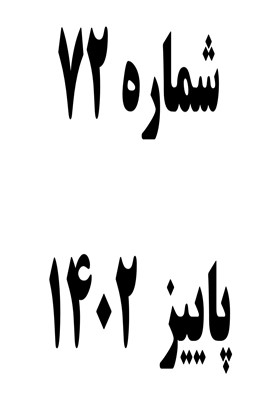Identifying the boundaries of old Tabarstan based on its political and historical geography
Subject Areas : Epistemological and methodological researcher of historical researchnahid pakzad 1 , mohamadreza sharifzade 2 , roknabadi davod 3 , Mahsa .khoie 4
1 - PhD student of Comparative and Analytical History of Islamic Art, Central Tehran Branch, Islamic Azad University, Tehran, Iran
2 - Professor of Art Department, Central Tehran Branch, Islamic Azad University, Tehran, Iran
3 - Professor of Art Department, Yazd Branch, Islamic Azad University. Yazd, Iran
4 - Assistant Professor and Director of Music Department, Central Tehran Branch, Islamic Azad University, Tehran, Iran
Keywords: historical geography, Tabari, Tabaristan, Tapuri people, Alborz mountain range,
Abstract :
Due to its special geographical conditions and cultural background, Tabaristan is one of the most important historical regions, and identifying its geographical boundaries as the background of events and the origin of artistic and cultural elements specific to the region seems essential for cultural and social studies. If we consider historical geography as a set of political, ethnic and cultural geography of a historical region, the purpose of this research is to examine the historical geography of Tabarstan to identify its scope. The research method was descriptive and analytical in the framework of historical geography and collecting information using library sources. The result of the research shows that Tabaristan, as the home of the Tapuri clans, included many areas from the east to the west of the plain and the northern and southern slopes of Alborz, which, due to its special geographical location, was able to withstand the Aryan immigrants and the Arabs for a long time. With the spread of conflicts with the envoys of the Arab caliphs and the central governments of Iran, the confrontation of local governments and the reduction of their authority, Tabarstan was out of unity and had changes in its borders. The range of border changes is Tabaristan, Dillman in the west, Gorgan in the east and Qoms and Ray in the south. Tabari dialect, along with Tabari customs and traditions, is common beyond the borders of Mazandaran and extends the range of old Tabaristan to the southern foothills of Alborz.
_||_


